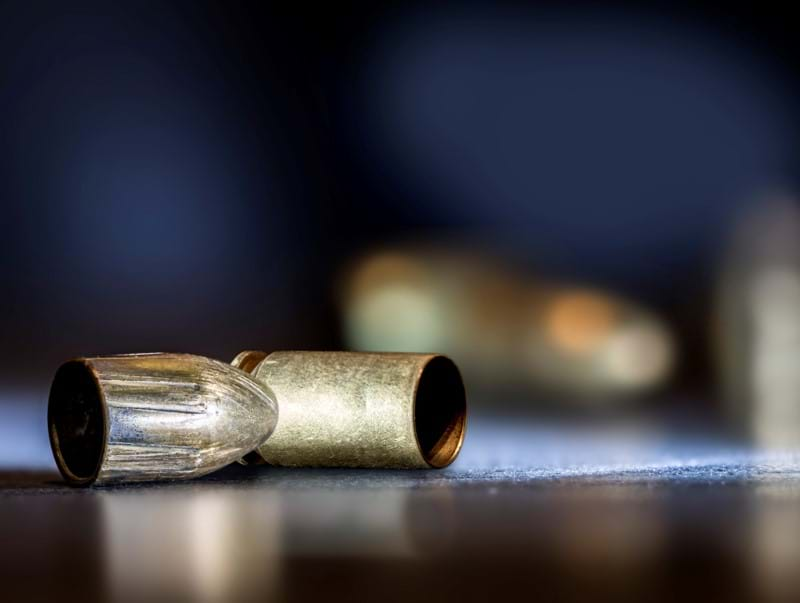There’s a story of a young girl watching her mom prepare the ham for the holiday dinner. She saw her mom cutting off each end of the ham and asked her why she did that. The mom said that she did not know; that’s the way her mom did it so the young girl would have to ask her. So, she did and her grandmother said the same thing. Wanting to get to the bottom of the mystery, the young girl went to her great-grandmother and asked why she cut off the ends of the ham. Her great-grandmother chuckled when she heard about what had been passed through the generations. You see, the reason she cut off the ends of the ham was because she did not have a big enough pan to hold the whole ham.
My career in forensic science began in 1984 and training in firearm and toolmark identification began in 1989. As I reflect back, there were many times I watched someone “cutting off the ends of the ham.” When advised about a particular approach to take, there were several times when I heard, “Not sure. That’s just what I was told.” Unfortunately, I didn’t have a grandmother or great-grandmother I could go to for the answer. So, I was kind of stuck. Certainly, there had to be a reason. The question was whether or not the reason remained legitimate. I felt like I was talking to Yul Brynner when he proclaimed in the Ten Commandments, “So, let it be written. So, let it be done.”
Now that it is 2018 and I have many more years upon which I can reflect, especially in firearm and toolmark identification, there are still many instances where the ends of the ham are being needlessly cut-away. I’m not suggesting that these practices be done away with but, I am suggesting that it is time to critically evaluate the reasons why we do certain things. The reason is because it is those things that can prevent examiners from making changes that can improve their ability to provide timely and relevant information to investigators, another group with their own ham cutting going on.
While performing research for a book, I have come to understand that many of the processes and procedures common in the standard operating procedures of firearm and toolmark units have their origin in the work of Calvin Goddard and Charles. E. Waite. They were very thorough in their examinations of firearm-related evidence, working to extract every bit of value from the evidence they examined. They also sought to provide investigators with as much information as possible to assist them in their investigations. For example, Waite spent an enormous amount of time collecting data on firearms with respect to general rifling characteristics and Goddard applauded this effort saying such information could be very valuable. Let’s consider the time. It was the early 20th century and the number of firearm manufacturers were quite small, shootings were not as common, and people were far more connected to their small communities than they are today. If an investigator started knocking on doors asking if they knew anyone who owned a Smith & Wesson, chances are they would get a name, an address, the names of their kids, the pets and what they had for dinner the previous night.
When I began training, not much changed from those times. Well, that’s not quite accurate. Many things did change. The number of shooting related incidents has increased dramatically. Major city police agencies are confiscating not tens of guns a month but hundreds. Forensic laboratories are being tasked with an increasing number of requests and accreditation has been established to help assure the public of the quality of work coming from those laboratories. As a result, various forensic units including firearm and toolmark examiners are backlogged if not weeks, then months; sometimes years. What did not change much was the way firearm-related evidence was assessed, evaluated and examined. “So, let it be written. So, let it be done.”
It wasn’t until the last decade of the 20th century that forensic firearm units saw a major technological upgrade in the form of IBIS technology. In many forensic laboratories it became the open case file, replacing an older Polaroid open case file if there was one at all. It was tacked on to the back end of casework and, every once in a while, there might be a link to an older unsolved case in the database. The laboratory celebrated and the examiners felt like heroes providing to the investigator a lead that had otherwise been unknown. Unfortunately, the investigators did not generally display the same enthusiasm because they were already working on this month’s shootings or, it may have been so long, those investigators have since been reassigned.
With that technological upgrade should have come a philosophical shift based on that technology but, instead, forensic laboratories were too busy cutting the ends of the ham. Rather than getting a bigger pan, IBIS was fit into an existing pan of processes and procedures which were, in part, responsible for backlogs that were into the months if not years. Fortunately, it isn’t too late to do that. This pan may not supply investigators with an exhaustive examination of every bit of evidence but, it will supply investigators with enough timely and actionable intelligence that will allow them to quickly pursue available leads before they go cold. Proper utilization of IBIS can make this vision a reality.
IBIS was correctly seen as a tool to link recovered guns to an open homicide as well as to provide links between shootings that would not have otherwise been linked. What was, and often times still is, overlooked is its value as a triage tool for forensic firearm casework; a process in which all firearms and shooting-related evidence is funneled through IBIS. You might say that this is impossible. Firearm units and examiners cannot keep up with their current caseload; it would be impossible to add more cases to the mix. That would be true if casework continued to be handled the way it has been handled. However, IBIS can change that – just as Goddard and Waite helped change the manner in which firearms evidence was considered in the early 20th century.
The concept is simple. Submitted firearm-related evidence is assessed, evaluated, and examined for the purposes of entry into IBIS as quickly as possible. It does not take much to evaluate a firearm and test fire it for these purposes. Several agencies have such a routine established that latent prints, DNA swabbing, processing for trace evidence, test firing and entry all get accomplished within 24 hours. If the firearm is potentially linked to shootings through correlation reviews, it is then that a firearm and its related prints, DNA and trace evidence can be examined more thoroughly.
Admittedly, given processes and procedures carried over from Goddard and Waite, it can take significantly more time to assess and evaluate cartridge cases and bullets recovered from crime scenes. It is common for agencies to ensure their full and complete examination which can take anywhere from a number of hours to a number of days, if not weeks. What is the end product? A case and report in which investigators may get an idea of the number of firearms involved, a list of 30 or so potential makes and models of responsible firearms, and it may never see a courtroom. Without a doubt, the actual forensic work will be of high quality. However, it is doubtful that the value of that work will be of similar quality to the investigators. More often than not, this approach checks a box to ensure all bases are covered rather than having a significant impact on an on-going investigation.
What if we took a fresh look at our processes and procedures in light of what IBIS can provide? Agencies willing to broaden their perspective have demonstrated that cartridge cases and bullets can be efficiently evaluated and assessed for purposes of entry into IBIS within 24 hours of recovery. In this way investigators can be provided with a key piece of critical information within 24 to 72 hours – whether or not that shooting event is related to another shooting event. As valuable as the other information from a comprehensive approach can hold for an investigator, I suspect that, if they were asked, having timely intelligence with respect to other shootings would be top on their list. If the case is linked to other shootings then the evidence can be examined more fully later if more investigative information is needed.
The initial, comprehensive approach of Goddard and Waite has served the forensic community well. At the same time, it must be remembered that it was developed at a much different time when firearm related crime was not necessarily a daily or an hourly event. Therefore, if we are to serve our communities well, it is essential that we evaluate the how and why behind what we do. The statistics bear it out. In some cities, when everything is entered in a timely fashion as described, 30 to 50% of the evidence entered into IBIS links to another shooting. The city of Cincinnati has reported a 50% reduction in shootings when comparing the first quarter of 2018 to 2017. What’s the difference? Cincinnati realized they had a bigger pan and could stop cutting off the ends of the ham.
Ultra Electronics Forensic Technology is prepared to help users realize the full potential of the investigative power and leverage that IBIS can bring to the table. The changes that were presented can be described in much more detail and customized to an agency’s situation and needs. Furthermore, the approach, while quick, is not quick and dirty. This approach does not jeopardize the integrity of the evidence nor does it not violate accreditation guidelines. What it does do is call into question the necessity of doing things the way they have been done simply because that’s the way it always has been done.






